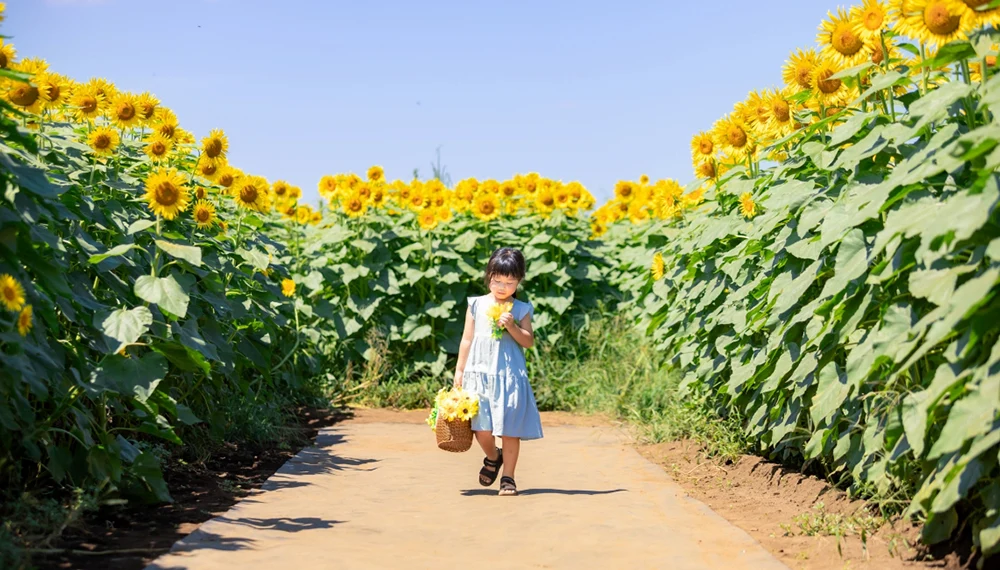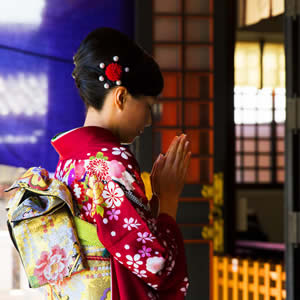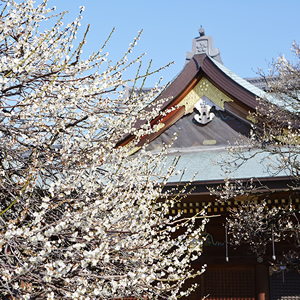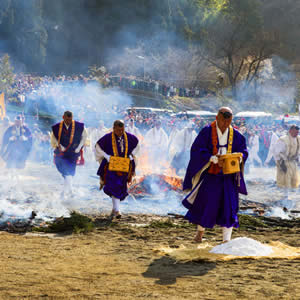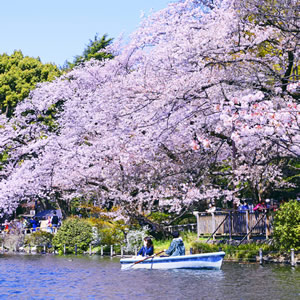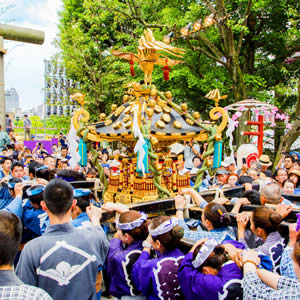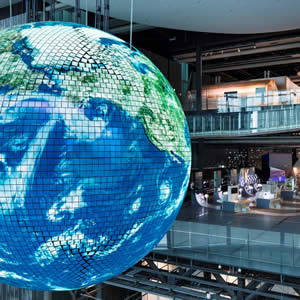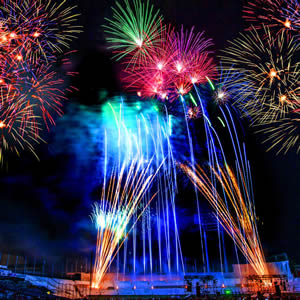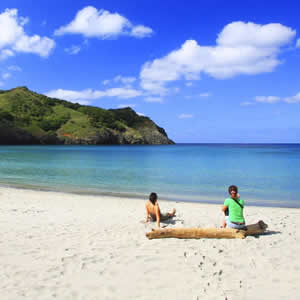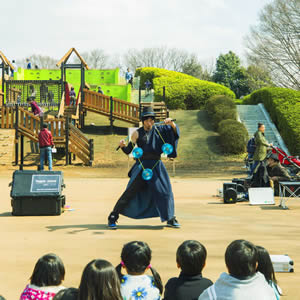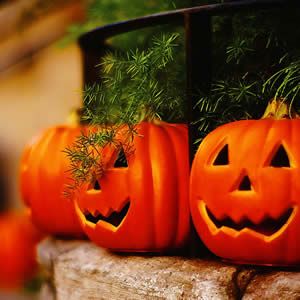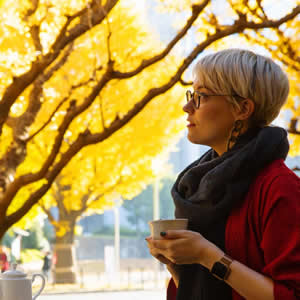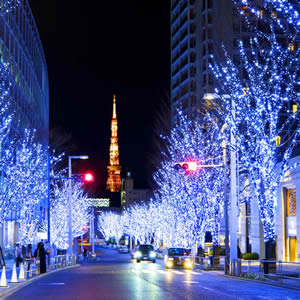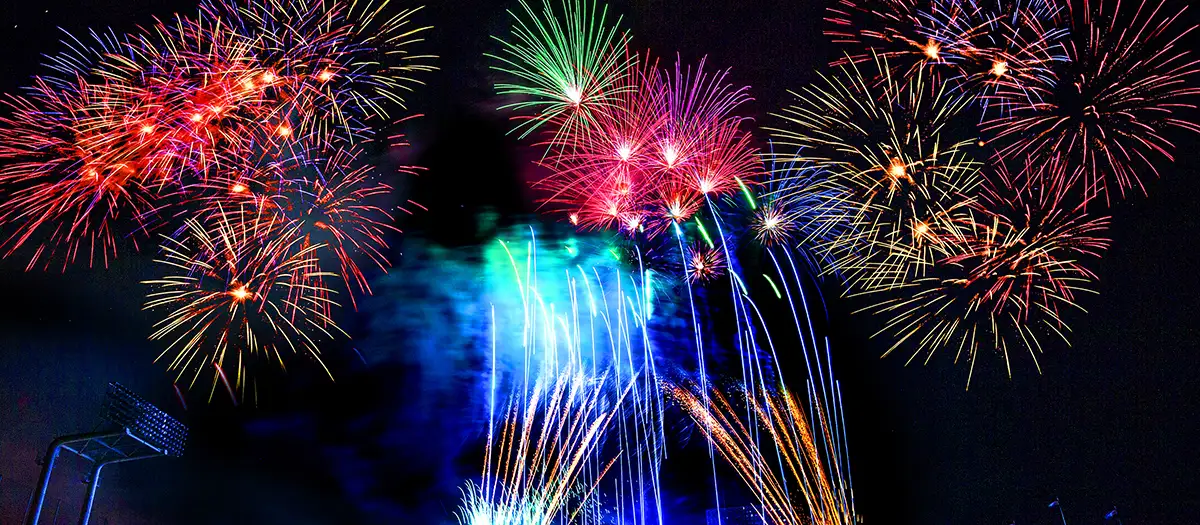
- Share this page
Share this page
- EN
Select Language
- FAVORITES
- Search
Detailed search: You can do a detailed search by keyword, genre, time, area and tag.
Main content starts here.
- Visit Tokyo |
- CALENDAR |
- Best Things to Do and See in Tokyo in July
Updated: October 17, 2025
Best Things to Do and See in Tokyo in July
Is July a good time to visit Tokyo?
If you're a fan of Japan's festivals and fireworks, July is a perfect month to visit Tokyo. From Tanabata Matsuri celebrations at the start of the month, to the breathtaking Sumida River Fireworks Festival in late July, there are great memories to be made throughout the month.
What is the weather like in Tokyo in July?
The average temperature in Tokyo in July is 28.7℃ (83.7℉). But there are highs of a whopping 37.3℃ (99℉), and temperatures can exceed 30℃ (86℉) for days at a time. The rainy season lasts until early July, so the weather can be rainy, hot, and humid. Make sure to bring breathable clothes that you can feel comfortable in. UV rays are very strong, so a lightweight folding umbrella with UV protection is helpful for protecting against both rays and rain.
Note: This guidance is based on meteorological data for 2024.
Best events, festivals, and other things to do in July
Design Festa vol.61
Design Festa is a huge international art and design event. Held at Tokyo Big Sight, it brings together over 10,000 artists representing a broad range of creative activities, including music, painting, fashion, crafts, photography, performances, and more. At Design Festa, visitors can hear directly from artists about their work, and can participate in workshops and other experiences, too.

Iriya Morning Glory Festival (Asagao Matsuri)
In the past, the gardeners of Iriya created around 1,000 varieties of morning glory plants through cross-pollination. That history is celebrated at the annual Iriya Morning Glory Festival—the largest festival in Japan dedicated to morning glory plants. There are around 30 stalls specializing in them, and around 100 other stalls to enjoy as well.
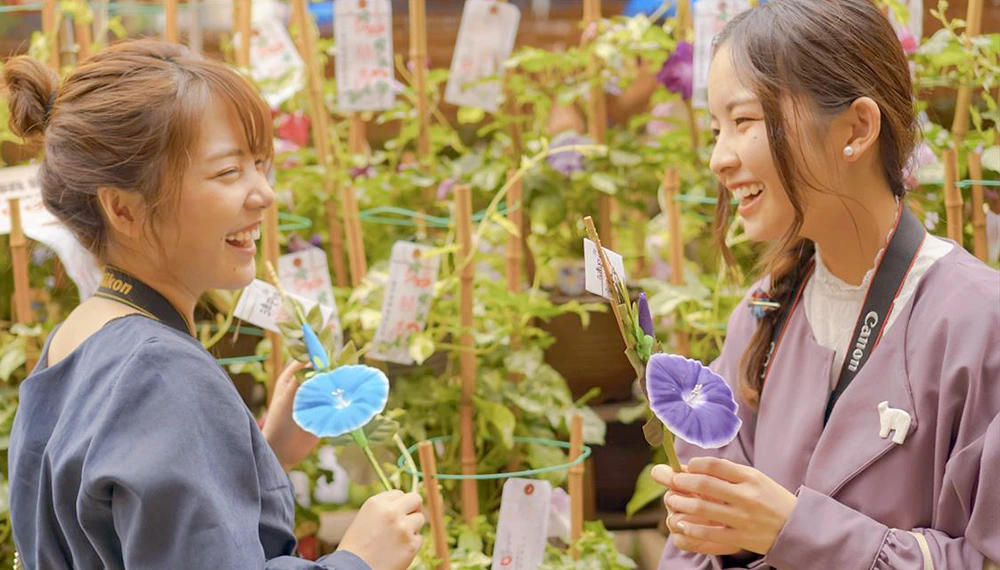
Tanabata Matsuri (Star Festival)
On July 7, people celebrate the Japanese traditional holiday of Tanabata by writing wishes on strips of paper, tying the paper to bamboo, and praying to the stars. It is said that for just this day once a year, Weaving Princess Orihime and Cowherd Hikoboshi cross the Milky Way to be together. Their reunion is celebrated nationwide during the Tanabata Matsuri, with events all over Tokyo. Wander through the Tanabata decorations at Shitamachi Tanabata Matsuri, then head to Tanabata Kigansai at Tokyo Daijingu Shrine, where people pray in hopes of meeting that special someone.
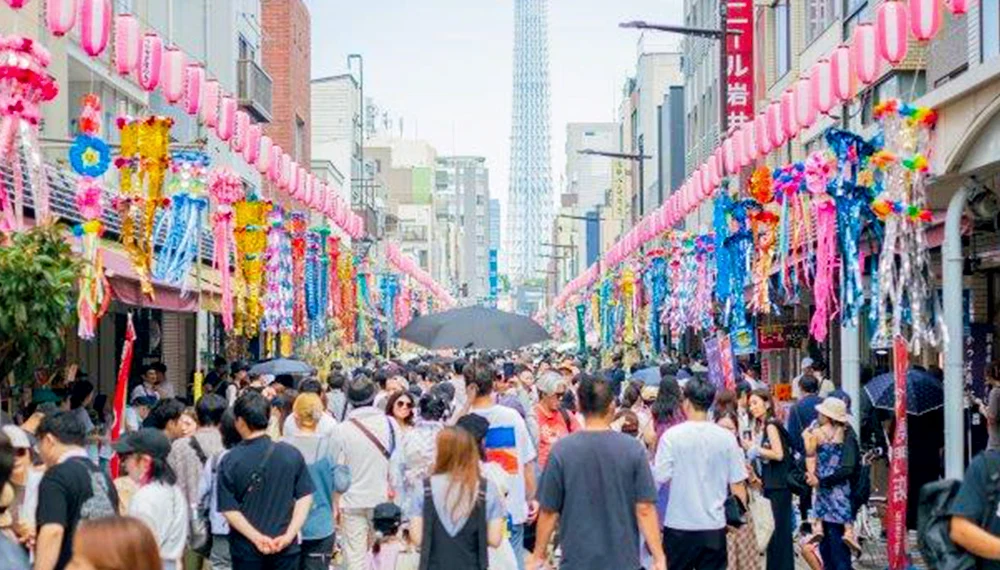
Japanese Lantern Plant Fair (Hozuki-Ichi)
Those who offer a prayer at Asakusa's Sensoji Temple on July 9 or July 10 are said to receive 46,000 days' worth of blessings. The Hozuki-ichi—a fair where hozuki (Japanese lantern plants) are sold—is held during this auspicious period. In Japan, hozuki are said to guide the spirits of ancestors to the family home for the summer Obon festival, so they are popular decorations at this time of year.
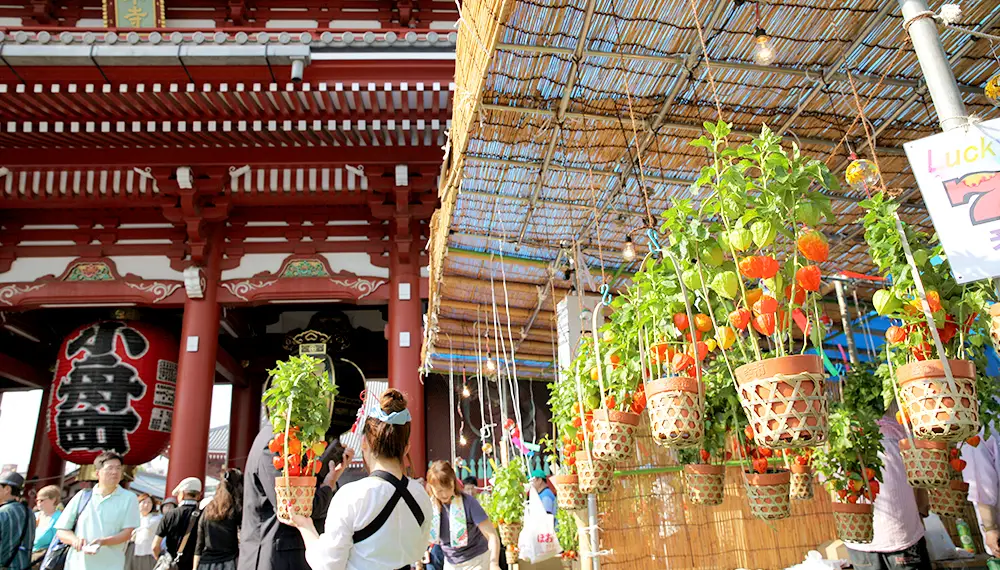
ⓒsenso-ji
Kingyo Matsuri (Goldfish Festival)
Goldfish-scooping stalls are a quintessential part of Japanese summer festivals. Tokyo's Edogawa City is famous for its goldfish, and it celebrates them each year at an annual festival. Goldfish are displayed and sold, and there are goldfish-scooping competitions. Visitors to Sumida Aquarium, located inside TOKYO SKYTREE TOWN, can see around 15 types of goldfish. There, you can learn all about the creatures themselves, as well as their cultural significance.
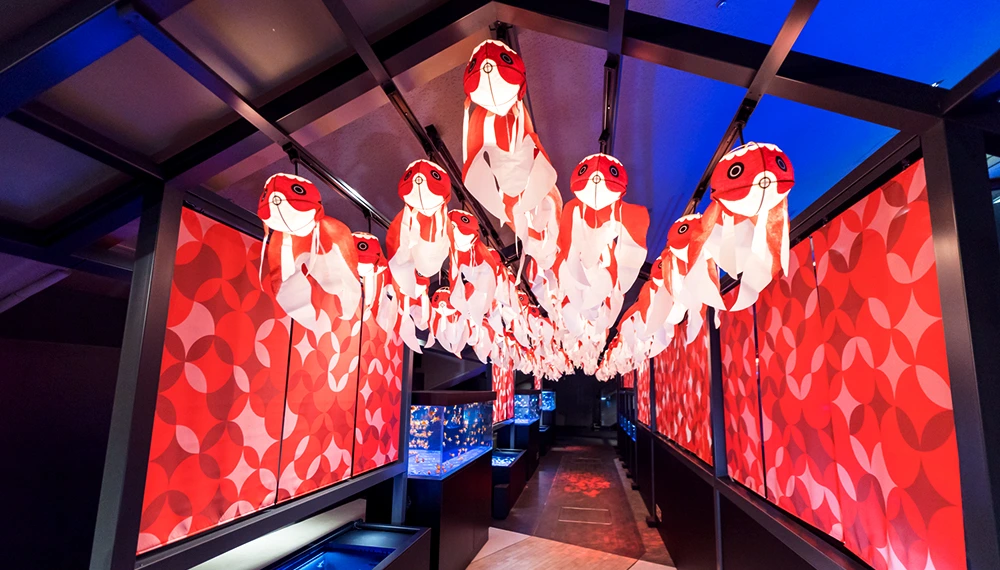
Kagurazaka Matsuri (Japanese Lantern Plant Market and Awa-odori Dance Festival)
Kagurazaka Matsuri is one of Tokyo's most popular summer festivals. It features the Japanese Lantern Plant Market, and the Awa-odori Dance Festival. On the days when the market is held, the streets are lined with yatai food stalls, and Japanese lantern plants are sold on the grounds of Bishamonten Zenkokuji Temple. Then comes the Awa-odori dance performances, which notably take place on a hill road.
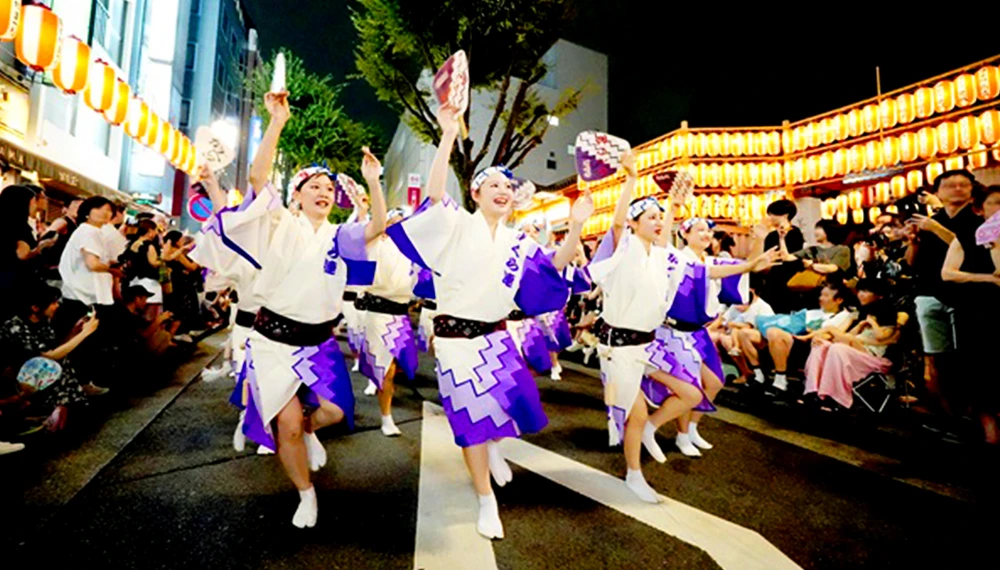
Sumida River Fireworks Festival
Sumida River Fireworks Festival is Tokyo's most popular fireworks festival: On average, 950,000 people attend each year. Close to 20,000 fireworks light up the sky above the Sumida River in Asakusa, making this one of Japan's biggest fireworks events.
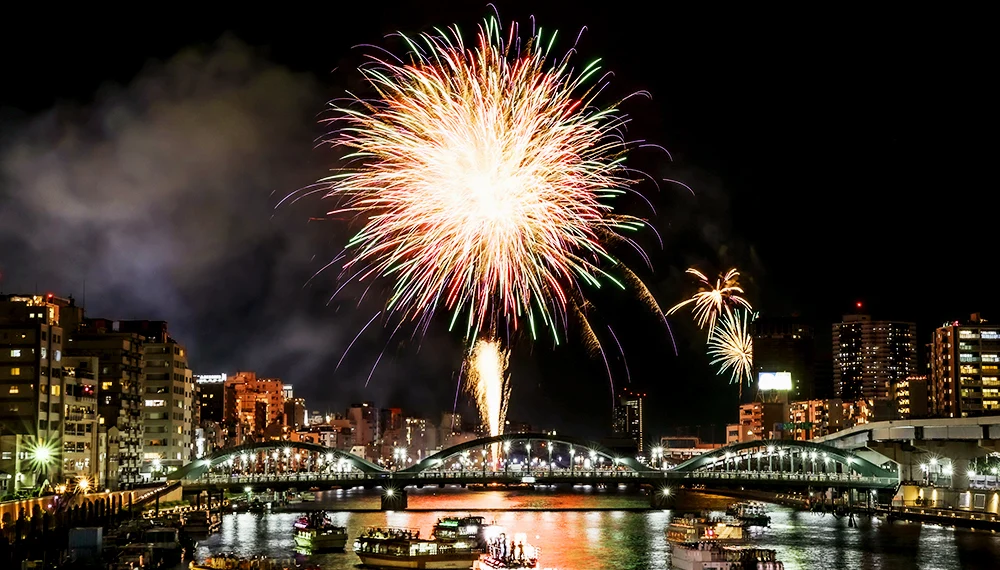
Photo courtesy of Taito City
Tachikawa Showa Kinen Park Fireworks
Showa Kinen Park provides wide, open views of the night sky. Highlights of the Tachikawa Showa Kinen Park Fireworks include the colossal size of some of the fireworks—the shakudama variety explode into flowers of fire around 400 meters in diameter—and a competitive performance of unique and innovative fireworks that did well in national competitions.
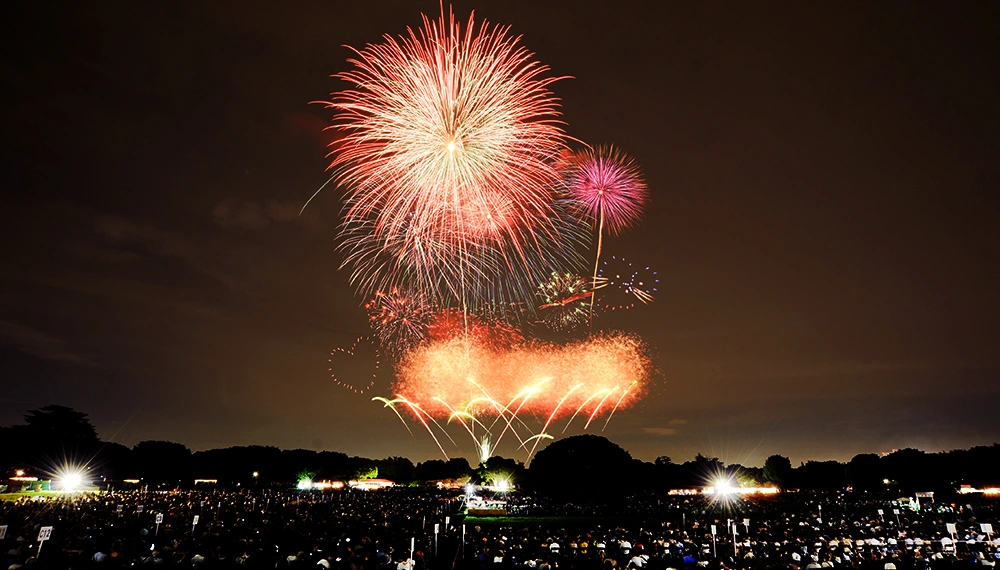
Kiyose Sunflower Festival
The Kiyose Sunflower Festival offers a sweeping view of brilliant yellow flowers under the dazzling summer sun, and is the biggest event of its kind in Tokyo. The vast venue, measuring roughly 24,000 square meters, is filled with some 100,000 sunflowers, a sight that draws crowds of visitors each year. The brilliant yellows and greens of the sunflower field offer a perfect opportunity for photos, so make sure to bring a camera. More serious photographers may be interested in the annual photo contest held during the festival. Visitors can purchase cut flowers and fresh local vegetables at the event.
